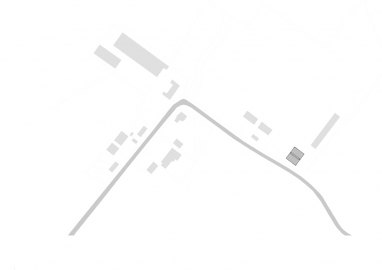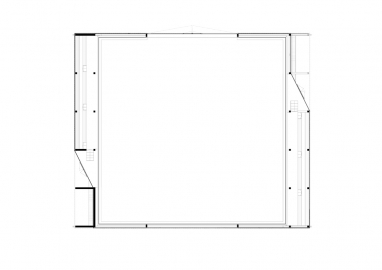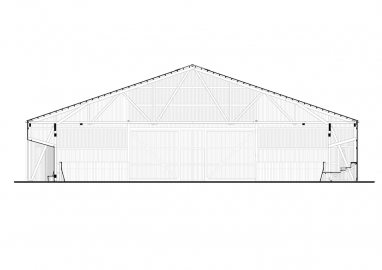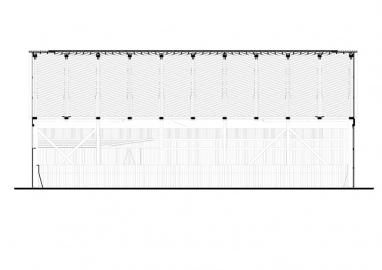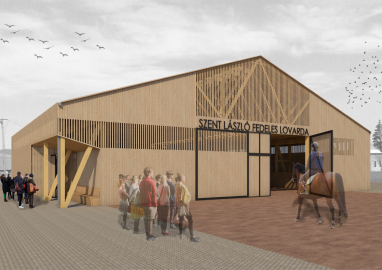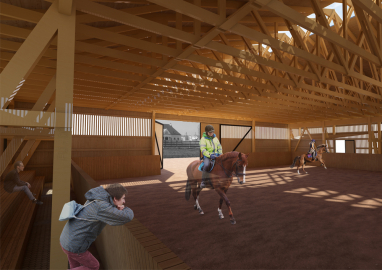Equestrian center in Sânsimion
An exercise in landscape transparency, bywhich a relatively large volume gets acquainted with the scale of the place, and especially with the cultural landscape in Transylvania’s Székler Region. The terrain for the project lies at the edge of the village.
The standard solution for such a building in today's Romania would have been a sheet metal industrial building. However, it seemed
essential to us that we use the traditional material of the place—wood, not only for integration with the local spirit, but also as a local resource; resources meaning not only the material, but also techniques, knowledge, community values. The children's awareness of such values became one of the project's educational components. The riding stables need to protect from the rain and the snow, and, partly, from the wind (horses are not bothered by drafts), but not from the cold. Therefore, a tightly sealed space was
not needed, but a roof, and underneath it, a delimited, aired and relatively transparent place. Quite like a barn, actually, a much larger‑scale barn. For the above reasons, we leaned towards an intermediary solution: neither industrial high‑tech (which was inaccessible, budget‑wise, and, in any way, it would have eliminated the connection to the place), nor a traditional interpretation (which was virtually impossible, given the openness of the space).
The St. Francis Foundation, set up and run by Franciscan Priest Böjte Csaba, is concerned with caring for and educating orphan or impoverished children. One of the goals of this foundation is that these children should be able to learn a trade, that they could use to make a living once they leave the homes. Therefore, the Sânsimion village kids are riding, they get used to the horse, and, besides learning a trade, they are more balanced and fare better in school. Considering the weather in the Ciuc area, outdoor training with horses can only take place over three months a year. With the aid of the roofed riding stables, this period can be extended throughout the year, which means safer horses, with a more balanced temperament, that is, increased safety. The building of Sânsimion has also become a prototype for similar equipment in the area. The combination between the archetypal form, the regional material, and the flexibility of openings, given by the building system, will allow, we believe, a real adequacy—to the situation of each place and to the specificity of a cultural space.
The structural solution is an “architectural‑engineering”one; it is precise, calculated. However, glued laminate wood or similar solutions were not used, but the relatively thin boards of hard wood, screwed together to make elements with a wider section and then, as in the case of trusses, more complex structures. “Modern” design is materialized through intermediary techniques, somewhere between classic craft and industrial production. The panels supporting the roof boarding and the tin sheet cover were placed unconventionally, namely diagonally, and not perpendicular to the direction of the farms. Their span does not increase significantly, but, together with the truss upper edges and the longitudinal beams, they build a series of interlocking triangles, thus stiffening the general structure. A secondary advantage is that, being exposed, they look good on the inside, and, together with the light from above and the one softened by the lateral lattices, they give an air of public building, of a place of a certain commanding appearance, and not one of a strictly functional building.

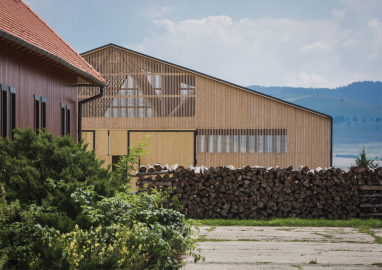 © Szigeti Vajk István
© Szigeti Vajk István
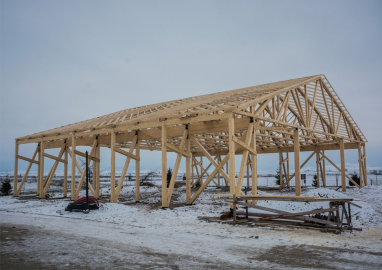 © Szigeti Vajk István
© Szigeti Vajk István
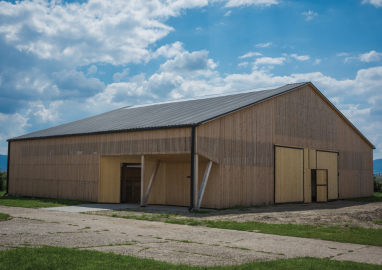 © Szigeti Vajk István
© Szigeti Vajk István
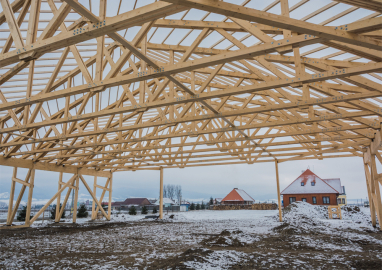 © Szigeti Vajk István
© Szigeti Vajk István
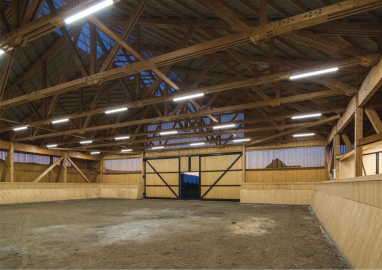 © Szigeti Vajk István
© Szigeti Vajk István
